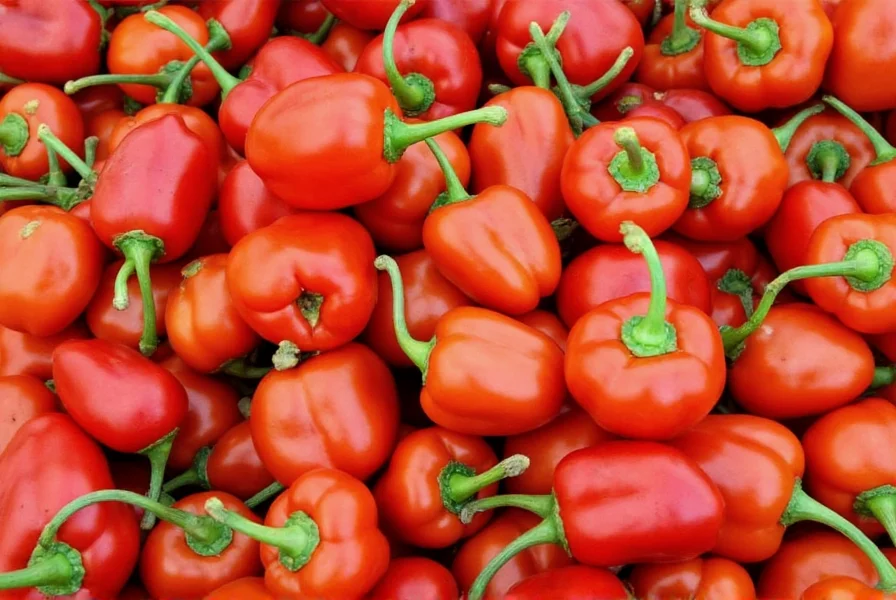What Is Capsaicin and the Scoville Scale?
Capsaicin is the natural compound responsible for the burning sensation in chili peppers. It binds to TRPV1 pain receptors in your mouth, tricking your brain into sensing heat without actual physical damage. The Scoville scale measures this heat intensity in Scoville Heat Units (SHU), ranging from 0 SHU for bell peppers to over 2 million SHU for the Carolina Reaper.
What Is Capsaicin? The Science Behind the Burn
Capsaicin is an alkaloid primarily found in the white membranes of chili peppers (not seeds). It activates TRPV1 receptors, triggering pain signals to your brain. This neurological trick creates the "burning" sensation while causing no actual tissue damage.
- Binds to TRPV1 receptors (heat sensors)
- Triggers release of substance P (pain signal)
- Eventually depletes substance P, causing temporary desensitization
- Can induce endorphin release (the "spice high")
Birds don't feel capsaicin's burn because they lack TRPV1 receptors, allowing them to spread pepper seeds without harm.
Understanding the Scoville Scale
Developed in 1912 by Wilbur Scoville, the scale originally measured pepper heat through human taste testing. Modern methods use high-performance liquid chromatography for precise measurement.
| Pepper Type | SHU Range |
|---|---|
| Bell Pepper | 0 SHU |
| Jalapeño | 2,500 – 8,000 SHU |
| Habanero | 100,000 – 350,000 SHU |
| Ghost Pepper (Bhut Jolokia) | ~1,000,000 SHU |
| Carolina Reaper | 1,400,000 – 2,200,000 SHU |
SHU values vary based on growing conditions, ripeness, and genetics, so they're approximate.
Health Benefits of Capsaicin
Research shows capsaicin has science-backed benefits:
- Pain Relief: Used in topical creams for arthritis and neuropathic pain
- Metabolism Boost: May increase calorie burning and fat oxidation
- Heart Health: Linked to improved cholesterol levels and circulation
- Anti-Inflammatory Properties: May help reduce chronic inflammation
However, excessive consumption can cause stomach irritation, so moderation is key.
How to Handle Spicy Foods Safely
When dealing with extreme heat, try these evidence-based tips:
- Milk or Dairy: Casein in milk binds to capsaicin, neutralizing the burn
- Sugary Drinks: Sugar competes with capsaicin for taste receptors
- Avoid Water: Water spreads capsaicin since it's oil-soluble
- Use Gloves When Handling Peppers: Prevents skin irritation
- Rinse with Oil: Vegetable oil can dissolve capsaicin from your mouth
Frequently Asked Questions
What is the Scoville scale?
The Scoville scale measures the heat of chili peppers in Scoville Heat Units (SHU), based on capsaicin concentration. Modern methods use lab testing for accuracy.
Why doesn't water help with spicy food?
Capsaicin is oil-based and not water-soluble. Water spreads it around your mouth, intensifying the burn. Dairy or oils are more effective at neutralizing it.
What's the hottest pepper in the world?
The Carolina Reaper holds the Guinness World Record at 1.4–2.2 million SHU, though newer hybrids like Pepper X claim higher (but unverified) ratings.
Is eating extremely spicy food dangerous?
For most people, it's not dangerous but can cause temporary discomfort. Extremely high levels may lead to nausea or stomach issues. Consult a doctor if you have medical conditions.
Does capsaicin have health benefits?
Yes, research shows potential benefits for pain relief, metabolism, heart health, and inflammation. However, moderation is important to avoid digestive issues.
Conclusion: Embrace the Burn, Respect the Science
Understanding capsaicin and the Scoville scale empowers you to enjoy spicy foods safely and appreciate the science behind the heat. Whether you're a casual eater or a heat seeker, knowing how spice works helps you make informed choices.











 浙公网安备
33010002000092号
浙公网安备
33010002000092号 浙B2-20120091-4
浙B2-20120091-4